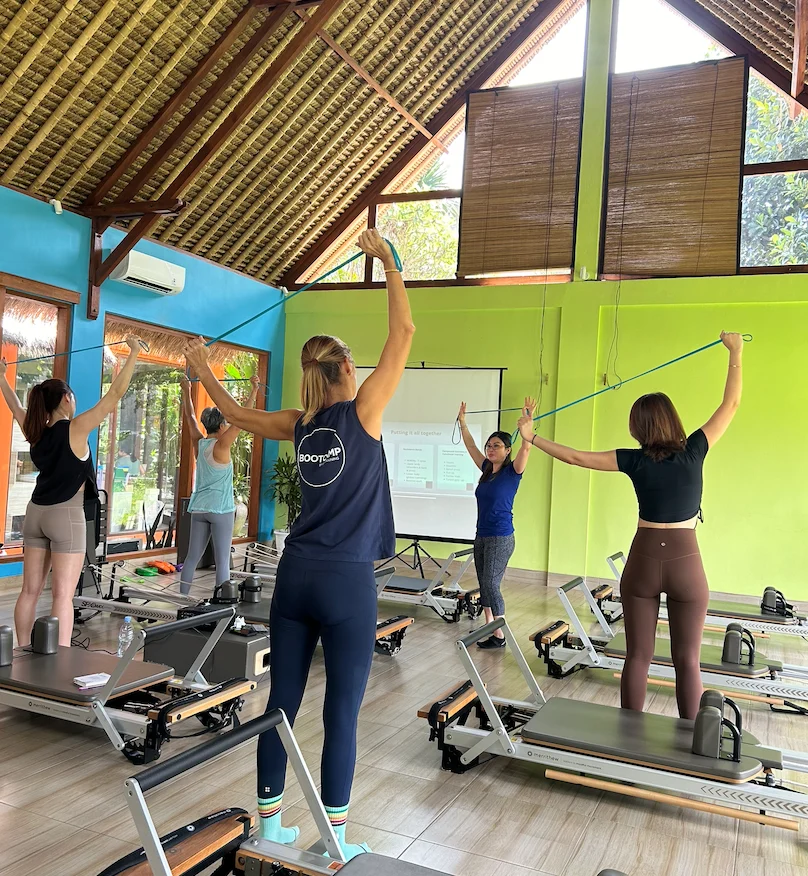It’s funny to think back now, but when I first heard about Pilates over 20 years ago, I honestly didn’t take it seriously. I remember a friend inviting me to a mat class, and I basically rolled my eyes.
“Pilates? That what people do when they don’t want to move? I needed something that made me feel the burn.” She laughed.
Fast-forward two years later, and karma came knocking in the form of a frozen shoulder and some serious back pain. Between my triathlon training, lifting weights, working a full time job, and juggling young kids, my body finally said, “That’s it—I’m done.”
A teammate in Japan told me about a therapist who used Pilates-based rehab. At that point, I was desperate enough to try anything. So I went. And just like that—boom—I was hooked.
For the first time in a year, I could move without pain. I started regaining mobility I thought I’d lost forever. My shoulder began to heal, my back felt stronger, and suddenly, my body made sense again. Pilates didn’t just fix the pain—it reconnected all the moving parts.
As a PT at the time, that blew my mind. I realized that while traditional fitness was great for building strength and conditioning, it missed the finer details—alignment, control, and true stability. Pilates filled those gaps like the missing puzzle piece I didn’t know I needed.
That’s when it clicked: this wasn’t just a recovery tool—it was a completely new way to train, teach, and live.
So yes, the same person who once said, “Pilates is for people who don’t like to move,” is now a full-blown Pilates Instructor and Instructor Trainer.
Life’s got a sense of humor, doesn’t it?

